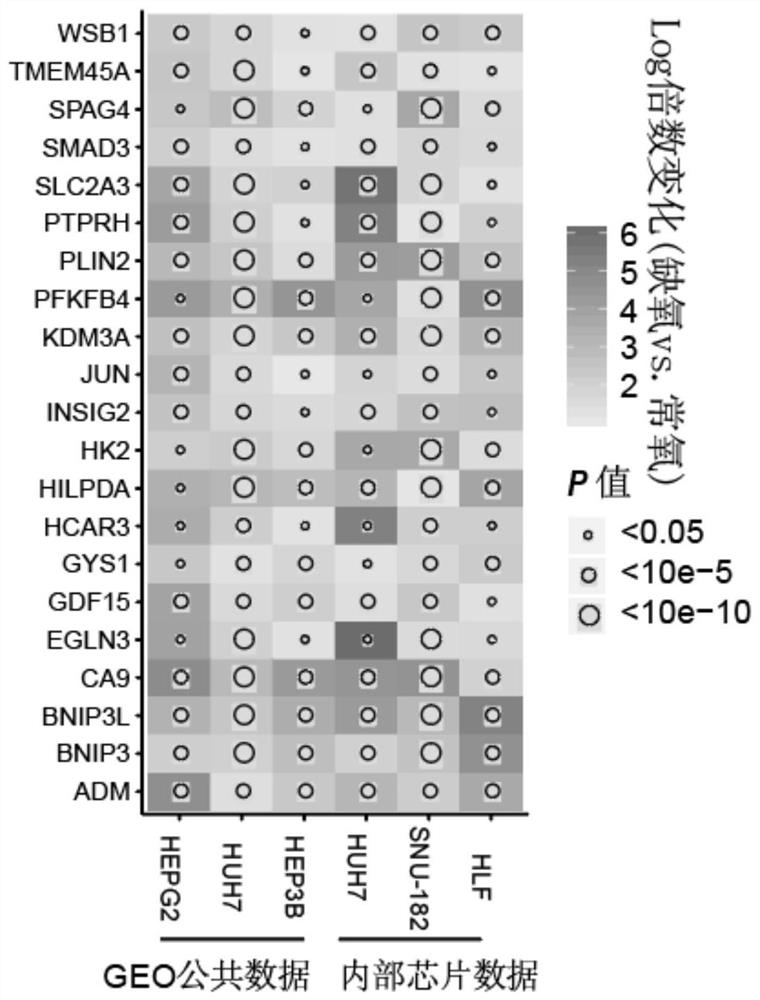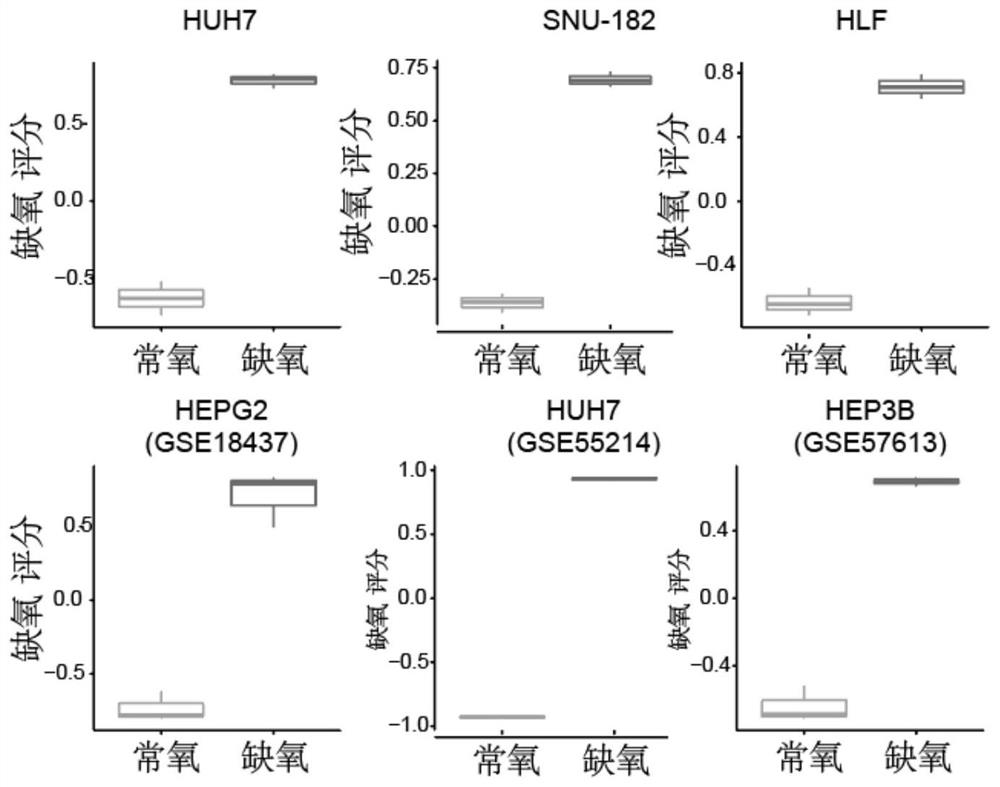Hypoxia-related gene marker combination for hepatocellular carcinoma and application thereof
A hepatocellular carcinoma and gene marker technology, applied in the field of biomedicine, can solve the problems of limited coverage and depth
- Summary
- Abstract
- Description
- Claims
- Application Information
AI Technical Summary
Problems solved by technology
Method used
Image
Examples
Embodiment 1
[0074] This example provides a combination of hypoxia-related gene markers and a screening method for hepatocellular carcinoma.
[0075] (1) Firstly, through microarray analysis, the differentially expressed genes in HUH7, SNU-182 and HLF cells after hypoxia treatment for 24 hours were obtained (log FC>0.58 or log FC<-0.58, and P<0.05, FC: fold change; After taking the overlap (overlap), 748 differentially expressed genes co-existing among the three cell lines were obtained, including 321 up-regulated genes and 427 down-regulated genes.
[0076] In order to further understand the possible biological roles of these differentially expressed genes after hypoxia treatment, the biological process (biological process) and pathway enrichment analysis were carried out on these differentially expressed genes in this example. There was enrichment in the reaction, and pathway enrichment analysis indicated that the differentially expressed genes were enriched in the HIF-1 signaling pathwa...
Embodiment 2
[0082] In this example, the accuracy and stability of the hypoxia-related gene marker combination in evaluating the hypoxic state of HCC cells were verified.
[0083] (1) Accuracy:
[0084] In order to assess whether the combination of markers composed of these 21 genes can be used to estimate the hypoxic state of HCC cells, in this example, a hypoxia score (hypoxia score) was performed using gene set variation analysis (GSVA) calculation.
[0085] As shown in Figure 1(b), compared with the control group, HUH7, SNU-182 and HLF cells after hypoxia treatment had significantly higher hypoxia scores.
[0086] Similar results were verified in the GSE18494, GSE55214 and GSE57613 datasets, as shown in Figure 1(c), P<0.05. Therefore, the hypoxia score calculated based on the combination of hypoxia-related gene markers of these 21 genes can reflect the hypoxia of HCC cells.
[0087] (2) Stability:
[0088] In order to further prove the stability of the marker combination in assessi...
Embodiment 3
[0096] In this example, a marker combination composed of 21 genes was used for typing and prognostic analysis of HCC (TCGA-LIHC and GSE14520 data sets).
[0097] (1) Using unsupervised hierarchical cluster analysis, the patients (n=374) in the TCGA-LIHC dataset were typed based on marker combinations composed of 21 genes, as shown in Figure 2(a) , all patients can be divided into two subtypes using 21-gene signature:
[0098] The overall survival rate of patients with LIHC-B type was significantly lower than that of patients with LIHC-A type (Figure 2(b), HR=2.15, Log-rank P<0.01), and the disease-free survival rate was also lower than Low (Fig. 2(c), HR=2.17, Log-rank P<0.01).
[0099] LIHC-A type (n = 315) and LIHC-B type (n = 59), there were significant differences in TNM stage and AFP level between LIHC-A type and LIHC-B type patients. Among them, the prognosis of patients with LIHC-B type was poor: the proportion of patients with stage TNMⅢ-Ⅳ in LIHC-B type was higher (...
PUM
 Login to View More
Login to View More Abstract
Description
Claims
Application Information
 Login to View More
Login to View More - R&D
- Intellectual Property
- Life Sciences
- Materials
- Tech Scout
- Unparalleled Data Quality
- Higher Quality Content
- 60% Fewer Hallucinations
Browse by: Latest US Patents, China's latest patents, Technical Efficacy Thesaurus, Application Domain, Technology Topic, Popular Technical Reports.
© 2025 PatSnap. All rights reserved.Legal|Privacy policy|Modern Slavery Act Transparency Statement|Sitemap|About US| Contact US: help@patsnap.com



